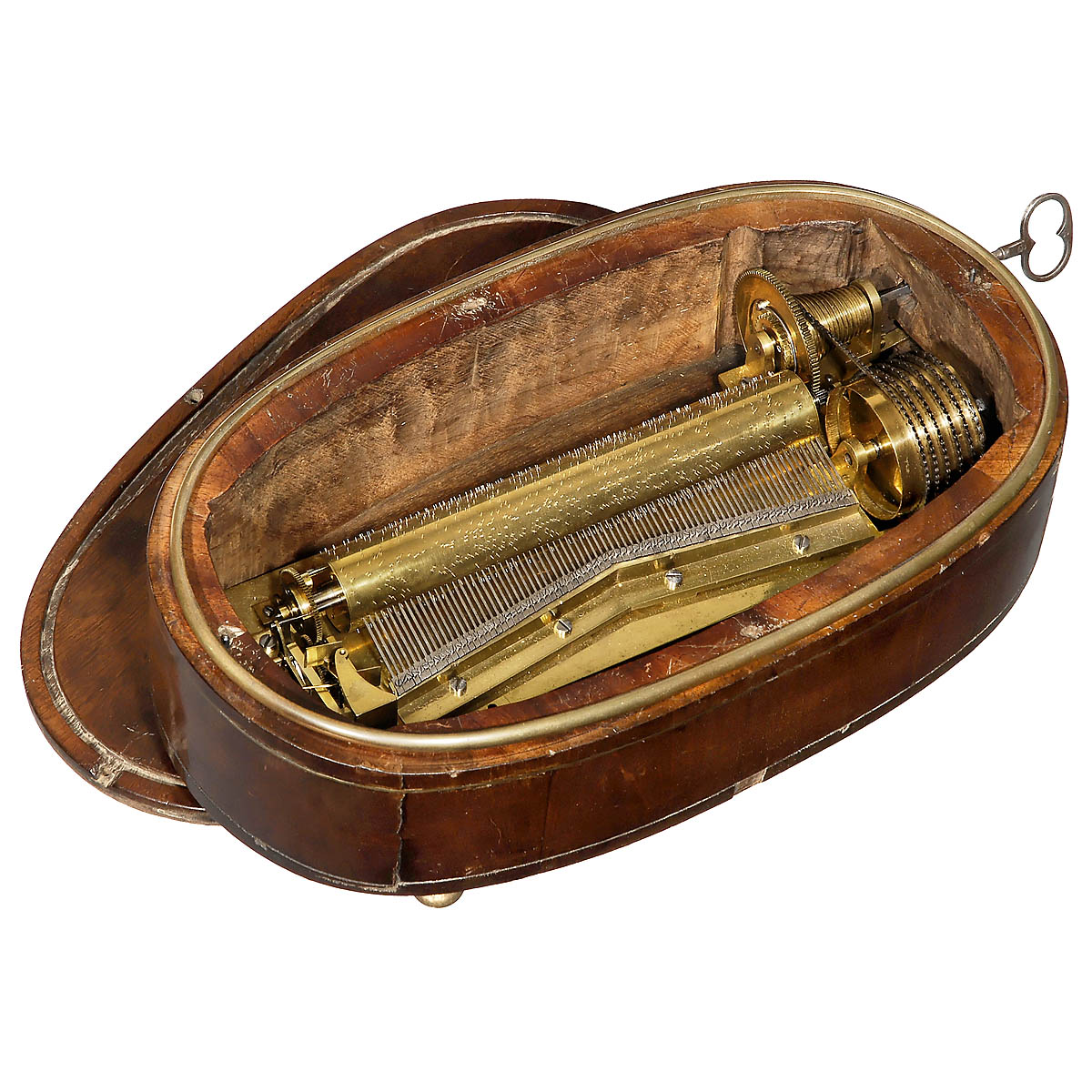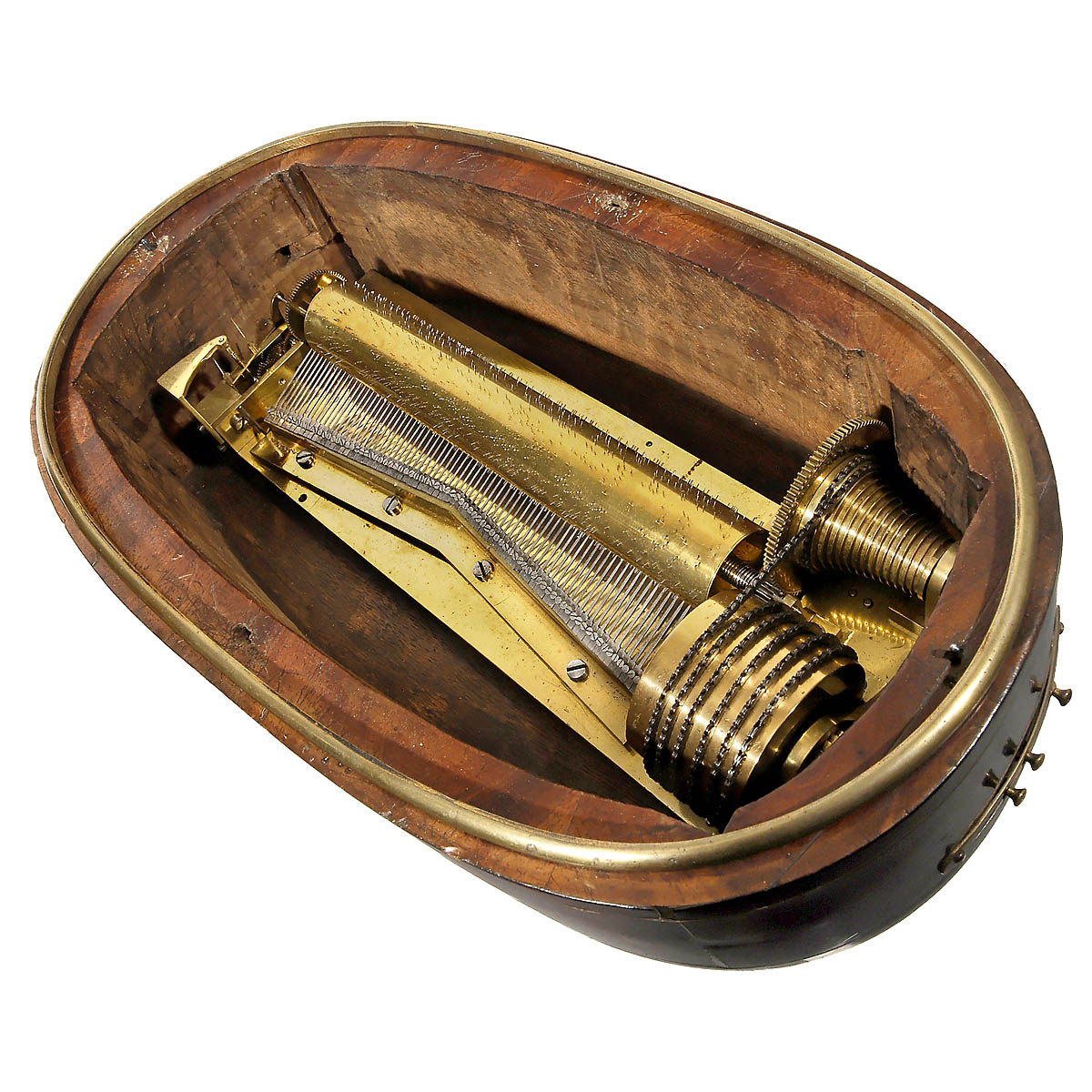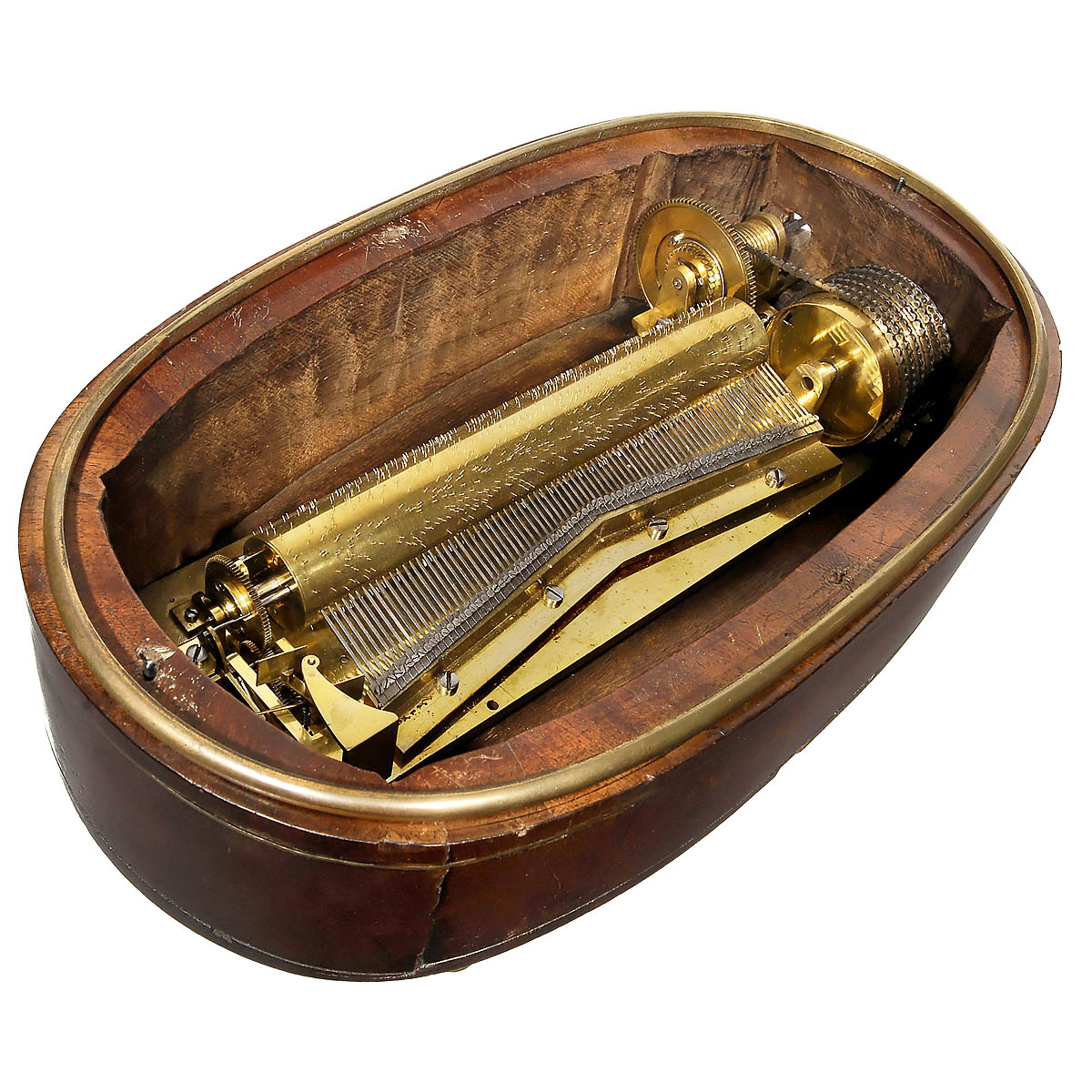


Probably Geneva, playing four airs, with 78 single teeth in chevron-shaped sectional comb (complete), bass teeth at the periphery, treble teeth in the middle, fusee spring, curved tapering governor-cock, brass bedplate, external change/repeat, stop and instant stop controls, in mahogany-veneered case with lid, brass beading and brass feet, wd. 14 ¾ in. (37,5 cm), cylinder 8 ¼ in. (21 cm), some age splits in case, movement and comb in fine fully-restored playing condition. Tunes play for around 50 seconds. A peculiarity of this movement are the three (instead of the customary two) gears in the governor train. Arthur Ord-Hume illustrates a movement with similar features in the base of a London-made clock, noting: "Three wheels mean that the endless screw is driven upwards, so the lower bearing has a steel bearing plate". - Provenance: Collection of Luuk Goldhoorn. - Literature: Eduard C. Saluz, "Klang Kunst", exhibition catalog, 1996, p. 167 for a similar movement; Arthur Ord-Hume, "The Musical Box", p. 88, plates 37-38. - An early movement with fine arrangements and a bright, delicate tone.

